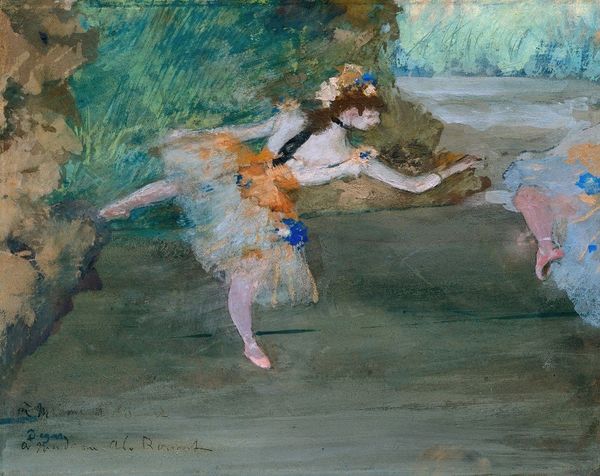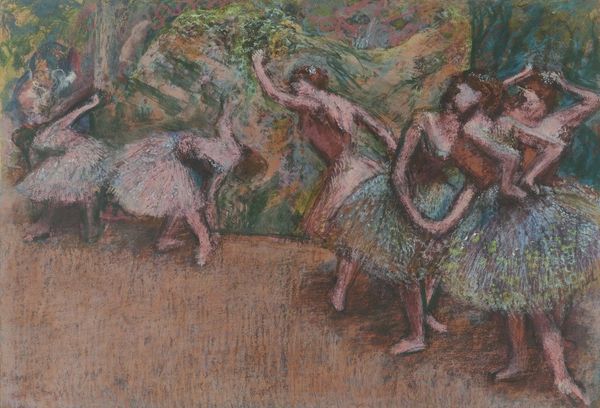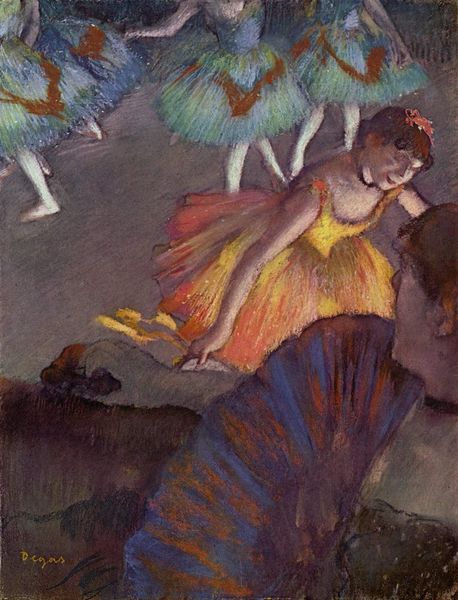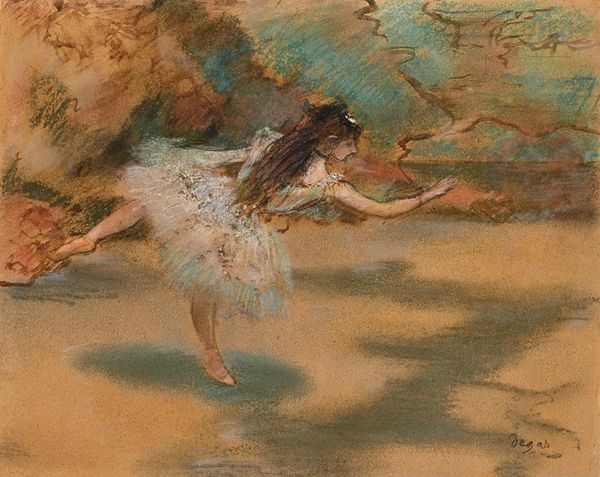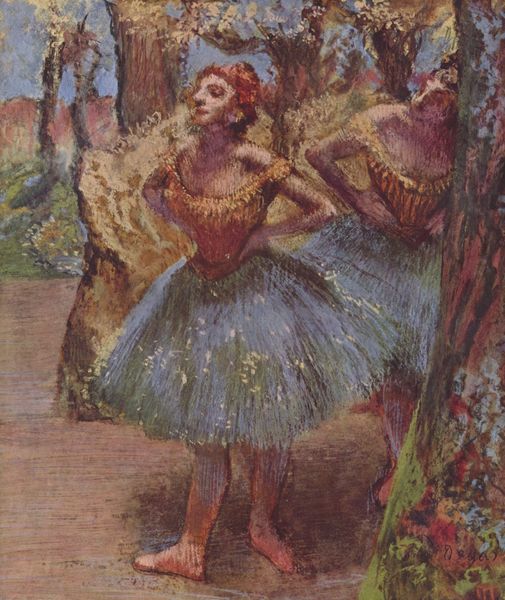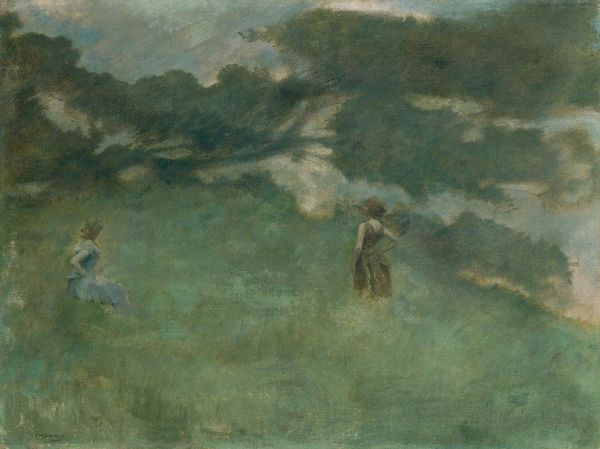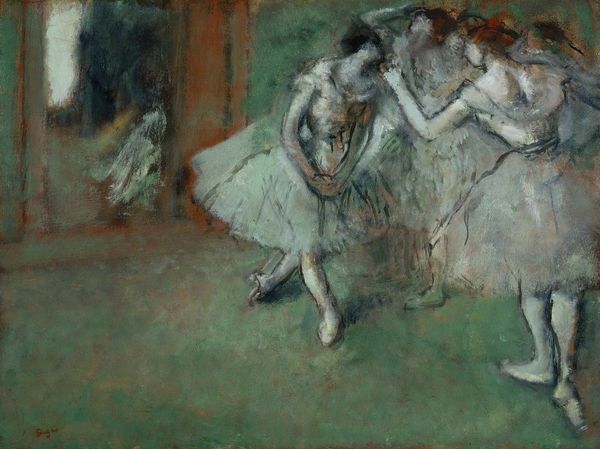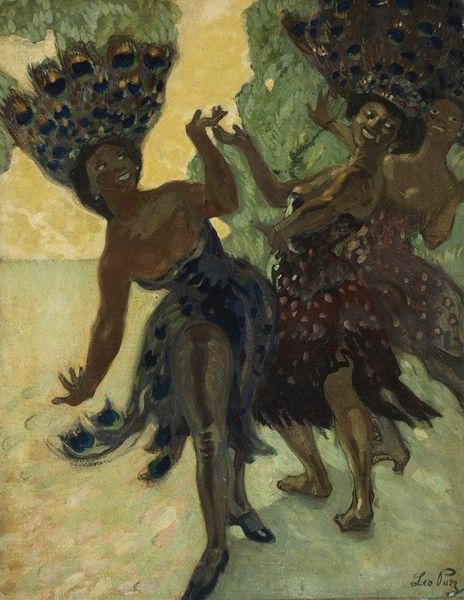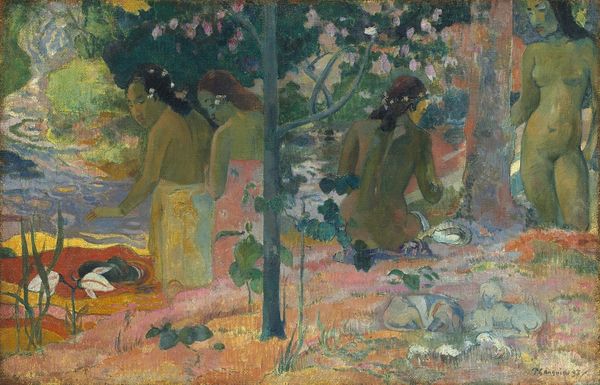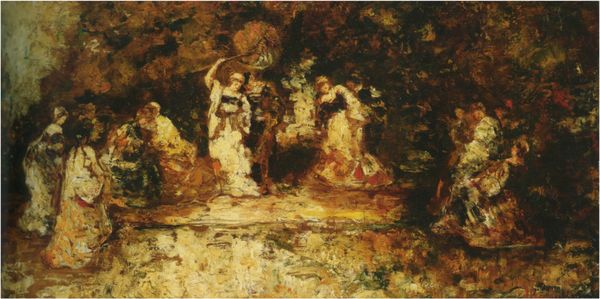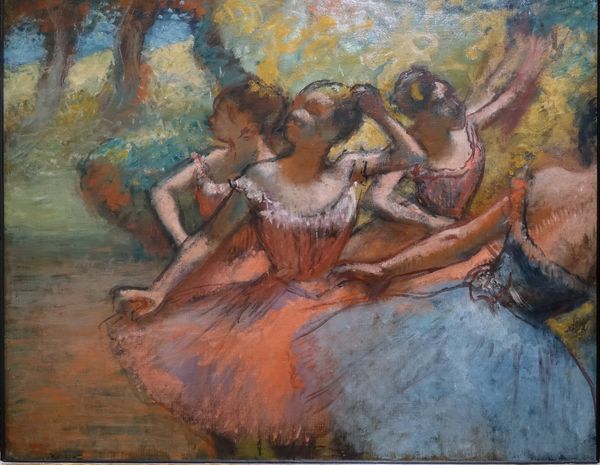
drawing, pastel
#
portrait
#
drawing
#
impressionism
#
oil painting
#
genre-painting
#
pastel
#
watercolor
Copyright: Public Domain: Artvee
Editor: This is Edgar Degas’s "Ballet Dancers," from around 1877. It seems to be a drawing done in pastels, and I'm really drawn to the textural quality he achieves. It almost looks like the dancers are emerging from the background, rather than standing in front of it. What are your observations on this piece? Curator: The interest for me lies in the fragmentation of form. Consider how Degas uses line and color, not to delineate perfectly realistic figures, but rather to suggest movement and the ephemeral nature of a fleeting moment. The composition resists easy closure, does it not? The eye is not guided to a central focal point, but roams freely, piecing together the scene. Editor: I see what you mean! It’s less about perfectly capturing a scene, and more about capturing the feeling of a moment, and even though it seems chaotic at first, all elements come together beautifully, forming an accurate portrayal. Can we delve more deeply into the function of colour here? Curator: Precisely. Now, observe the juxtaposition of the vibrant tutus against the muted tones of the background. The contrast enhances the figures’ presence, but also sets up an intriguing tension. Consider this from a purely formal perspective. The artist manipulates our perception through color, creating a visual rhythm. It draws our attention, but prevents it from settling. Editor: The rhythm and vibrancy makes the figures look almost restless! It certainly emphasizes their activity more. This perspective encourages me to closely examine every choice, enhancing my ability to deeply contemplate artwork like a true expert. Curator: Agreed, examining Degas’s art is not solely about representing ballet dancers. By analyzing visual components—color, line, form, composition, and light— we access a profound meditation on motion and visual experience.
Comments
No comments
Be the first to comment and join the conversation on the ultimate creative platform.

